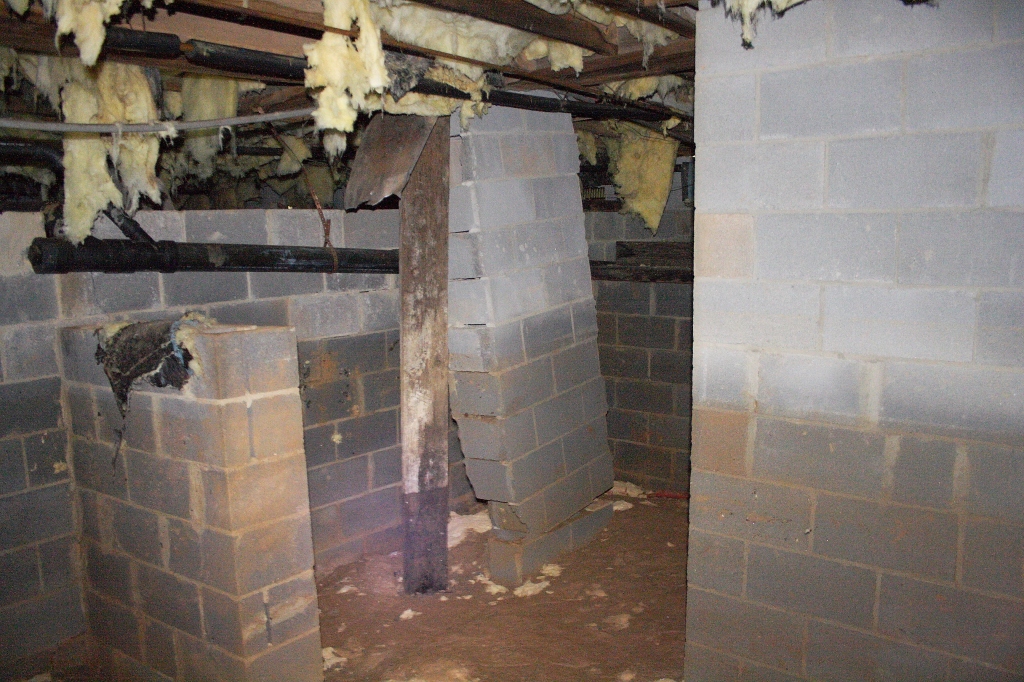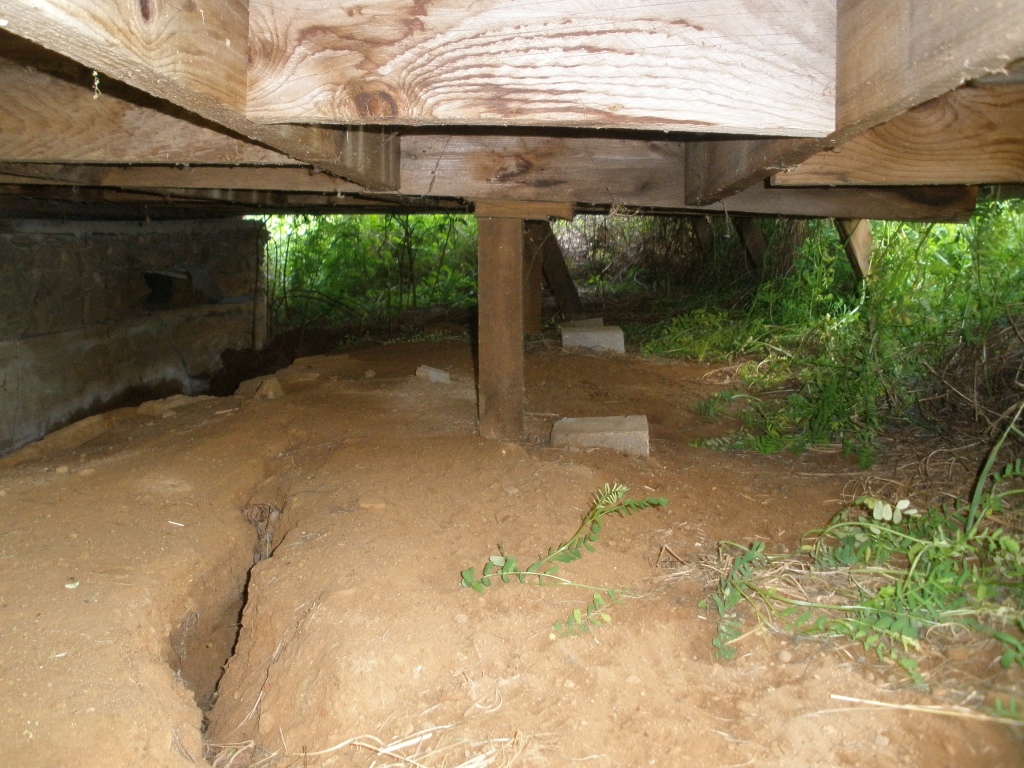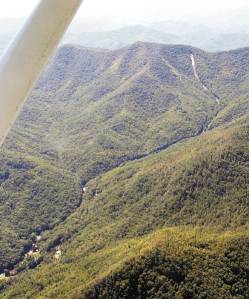The term “landslide” includes a wide range of ground movement, such as rock falls, deep failure of slopes, and shallow debris flows (USGS). There are several types of landslides in which the key difference is how the land moves down slope and the composition of that moving material. Below are definitions of common types of landslides in North Carolina. A Debris Flow (also commonly called a Mudslide) is a moving mass of loose mud, sand, soil, rock, water and air that travels down a slope under the influence of gravity. To be considered a debris flow, the moving material must be loose and capable of “flow”, and more than half of the solids in the mass must be larger than sand grains.
Weathered Rock or Debris Slide is a coherent block of material that “slides” over a failure surface. Weathered rock is bedrock that has weathered to soil, but that maintains some of its parent rock structure. Debris is soil where more than half of the solids are larger than sand grains. A Rock Slide is a mass of freshly broken rock material that moves by gravity in one swift movement.
Landslides are prevalent in Western North Carolina especially when conditions are right. There are several triggers that can cause landslides:
- Freeze-Thaw
- Precipitation
- Slope Modifications
- Ground-shaking/blasting
There have been several large landslide events in the recent past that have endangered life and property and unfortunately in some cases destroyed people’s homes and resulted in casualties.
The Ghost Town and Peeks Creek landslides were larger, quick-moving events. However, smaller and slower-moving landslides can incur substantial damage to structures over time. Many properties are slowly being damaged by landslides and there are signs of the ground moving. Some typical signs include cracks in the ground, driveways, roads, and structures. Sometimes trees even show signs of the earth moving below them. Knowing what to look for on a property before houses, buildings, driveways/roads, and other infrastructure is built is the key to avoiding some of the examples below












